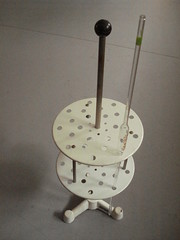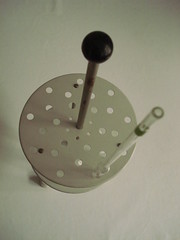When I walk around our own collections—or when I visit other (history of) science and medicine museums—I’m often struck by the relative lack of mundane biomedical laboratory artefacts.
The acquisition of lab artefacts tends to focus on high-tech things like gene sequencers, PET scanners, PCR machines, knock-out mice, etc. Curators are fond of them, perhaps because these are the kinds of artefacts that the donators (lab people) spontaneously come to think of when asked for potential museum items.
As a consequence much ephemeral and mundane laboratory equipment—like cover slips, tissue grinders, disposable gloves, plastic tubing, cups and flasks, filtering equipment, petri dishes, cell spreaders, and so forth—are largely absent in museum collections and displays. Few curators think of collecting them—and even fewer donators think of saving them for posterity.
This is a shame, because these pedestrian objects are often essential for making sense of biomedical laboratory culture (cf. earlier post here). Take for example a common pipette support rack (probably from the 1960s when they still used traditional glass pipettes in 1-50 milliliter volumes):


It’s a very useful everyday thing which helps keep order on the bench. It has the same function in the lab as the dish drying rack has in a ordinary kitchen—in other words, it’s indispensable! Every kitchen-savvy person knows that the dish rack is more important for a well-functioning kitchen that a gas oven with electronic timer and interactive colour display.
